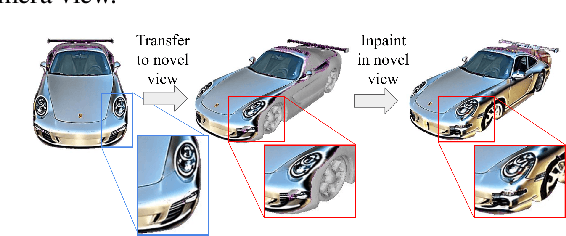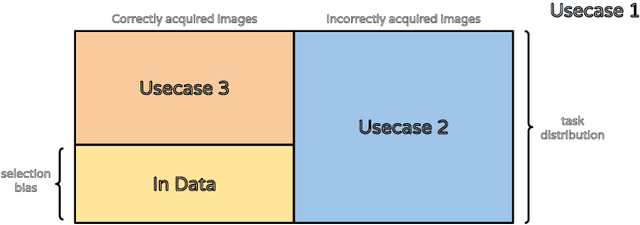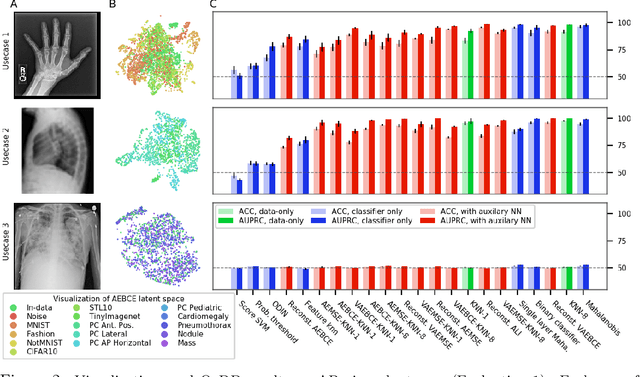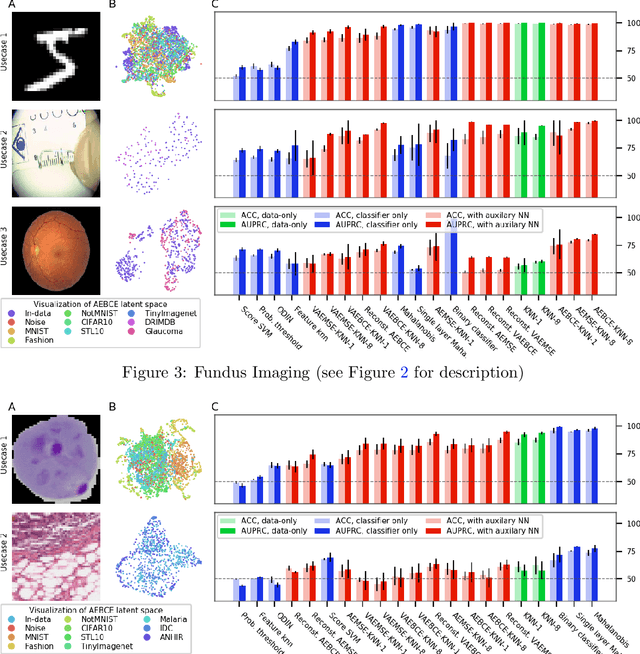Tianshi Cao
ChronoEdit: Towards Temporal Reasoning for Image Editing and World Simulation
Oct 05, 2025Abstract:Recent advances in large generative models have significantly advanced image editing and in-context image generation, yet a critical gap remains in ensuring physical consistency, where edited objects must remain coherent. This capability is especially vital for world simulation related tasks. In this paper, we present ChronoEdit, a framework that reframes image editing as a video generation problem. First, ChronoEdit treats the input and edited images as the first and last frames of a video, allowing it to leverage large pretrained video generative models that capture not only object appearance but also the implicit physics of motion and interaction through learned temporal consistency. Second, ChronoEdit introduces a temporal reasoning stage that explicitly performs editing at inference time. Under this setting, the target frame is jointly denoised with reasoning tokens to imagine a plausible editing trajectory that constrains the solution space to physically viable transformations. The reasoning tokens are then dropped after a few steps to avoid the high computational cost of rendering a full video. To validate ChronoEdit, we introduce PBench-Edit, a new benchmark of image-prompt pairs for contexts that require physical consistency, and demonstrate that ChronoEdit surpasses state-of-the-art baselines in both visual fidelity and physical plausibility. Code and models for both the 14B and 2B variants of ChronoEdit will be released on the project page: https://research.nvidia.com/labs/toronto-ai/chronoedit
Masks make discriminative models great again!
Jul 01, 2025Abstract:We present Image2GS, a novel approach that addresses the challenging problem of reconstructing photorealistic 3D scenes from a single image by focusing specifically on the image-to-3D lifting component of the reconstruction process. By decoupling the lifting problem (converting an image to a 3D model representing what is visible) from the completion problem (hallucinating content not present in the input), we create a more deterministic task suitable for discriminative models. Our method employs visibility masks derived from optimized 3D Gaussian splats to exclude areas not visible from the source view during training. This masked training strategy significantly improves reconstruction quality in visible regions compared to strong baselines. Notably, despite being trained only on masked regions, Image2GS remains competitive with state-of-the-art discriminative models trained on full target images when evaluated on complete scenes. Our findings highlight the fundamental struggle discriminative models face when fitting unseen regions and demonstrate the advantages of addressing image-to-3D lifting as a distinct problem with specialized techniques.
Cosmos-Drive-Dreams: Scalable Synthetic Driving Data Generation with World Foundation Models
Jun 11, 2025Abstract:Collecting and annotating real-world data for safety-critical physical AI systems, such as Autonomous Vehicle (AV), is time-consuming and costly. It is especially challenging to capture rare edge cases, which play a critical role in training and testing of an AV system. To address this challenge, we introduce the Cosmos-Drive-Dreams - a synthetic data generation (SDG) pipeline that aims to generate challenging scenarios to facilitate downstream tasks such as perception and driving policy training. Powering this pipeline is Cosmos-Drive, a suite of models specialized from NVIDIA Cosmos world foundation model for the driving domain and are capable of controllable, high-fidelity, multi-view, and spatiotemporally consistent driving video generation. We showcase the utility of these models by applying Cosmos-Drive-Dreams to scale the quantity and diversity of driving datasets with high-fidelity and challenging scenarios. Experimentally, we demonstrate that our generated data helps in mitigating long-tail distribution problems and enhances generalization in downstream tasks such as 3D lane detection, 3D object detection and driving policy learning. We open source our pipeline toolkit, dataset and model weights through the NVIDIA's Cosmos platform. Project page: https://research.nvidia.com/labs/toronto-ai/cosmos_drive_dreams
Cosmos-Transfer1: Conditional World Generation with Adaptive Multimodal Control
Mar 18, 2025Abstract:We introduce Cosmos-Transfer, a conditional world generation model that can generate world simulations based on multiple spatial control inputs of various modalities such as segmentation, depth, and edge. In the design, the spatial conditional scheme is adaptive and customizable. It allows weighting different conditional inputs differently at different spatial locations. This enables highly controllable world generation and finds use in various world-to-world transfer use cases, including Sim2Real. We conduct extensive evaluations to analyze the proposed model and demonstrate its applications for Physical AI, including robotics Sim2Real and autonomous vehicle data enrichment. We further demonstrate an inference scaling strategy to achieve real-time world generation with an NVIDIA GB200 NVL72 rack. To help accelerate research development in the field, we open-source our models and code at https://github.com/nvidia-cosmos/cosmos-transfer1.
LATTE3D: Large-scale Amortized Text-To-Enhanced3D Synthesis
Mar 22, 2024Abstract:Recent text-to-3D generation approaches produce impressive 3D results but require time-consuming optimization that can take up to an hour per prompt. Amortized methods like ATT3D optimize multiple prompts simultaneously to improve efficiency, enabling fast text-to-3D synthesis. However, they cannot capture high-frequency geometry and texture details and struggle to scale to large prompt sets, so they generalize poorly. We introduce LATTE3D, addressing these limitations to achieve fast, high-quality generation on a significantly larger prompt set. Key to our method is 1) building a scalable architecture and 2) leveraging 3D data during optimization through 3D-aware diffusion priors, shape regularization, and model initialization to achieve robustness to diverse and complex training prompts. LATTE3D amortizes both neural field and textured surface generation to produce highly detailed textured meshes in a single forward pass. LATTE3D generates 3D objects in 400ms, and can be further enhanced with fast test-time optimization.
TexFusion: Synthesizing 3D Textures with Text-Guided Image Diffusion Models
Oct 20, 2023



Abstract:We present TexFusion (Texture Diffusion), a new method to synthesize textures for given 3D geometries, using large-scale text-guided image diffusion models. In contrast to recent works that leverage 2D text-to-image diffusion models to distill 3D objects using a slow and fragile optimization process, TexFusion introduces a new 3D-consistent generation technique specifically designed for texture synthesis that employs regular diffusion model sampling on different 2D rendered views. Specifically, we leverage latent diffusion models, apply the diffusion model's denoiser on a set of 2D renders of the 3D object, and aggregate the different denoising predictions on a shared latent texture map. Final output RGB textures are produced by optimizing an intermediate neural color field on the decodings of 2D renders of the latent texture. We thoroughly validate TexFusion and show that we can efficiently generate diverse, high quality and globally coherent textures. We achieve state-of-the-art text-guided texture synthesis performance using only image diffusion models, while avoiding the pitfalls of previous distillation-based methods. The text-conditioning offers detailed control and we also do not rely on any ground truth 3D textures for training. This makes our method versatile and applicable to a broad range of geometry and texture types. We hope that TexFusion will advance AI-based texturing of 3D assets for applications in virtual reality, game design, simulation, and more.
* Videos and more results on https://research.nvidia.com/labs/toronto-ai/texfusion/
Differentially Private Diffusion Models
Oct 18, 2022



Abstract:While modern machine learning models rely on increasingly large training datasets, data is often limited in privacy-sensitive domains. Generative models trained with differential privacy (DP) on sensitive data can sidestep this challenge, providing access to synthetic data instead. However, training DP generative models is highly challenging due to the noise injected into training to enforce DP. We propose to leverage diffusion models (DMs), an emerging class of deep generative models, and introduce Differentially Private Diffusion Models (DPDMs), which enforce privacy using differentially private stochastic gradient descent (DP-SGD). We motivate why DP-SGD is well suited for training DPDMs, and thoroughly investigate the DM parameterization and the sampling algorithm, which turn out to be crucial ingredients in DPDMs. Furthermore, we propose noise multiplicity, a simple yet powerful modification of the DM training objective tailored to the DP setting to boost performance. We validate our novel DPDMs on widely-used image generation benchmarks and achieve state-of-the-art (SOTA) performance by large margins. For example, on MNIST we improve the SOTA FID from 48.4 to 5.01 and downstream classification accuracy from 83.2% to 98.1% for the privacy setting DP-$(\varepsilon{=}10, \delta{=}10^{-5})$. Moreover, on standard benchmarks, classifiers trained on DPDM-generated synthetic data perform on par with task-specific DP-SGD-trained classifiers, which has not been demonstrated before for DP generative models. Project page and code: https://nv-tlabs.github.io/DPDM.
Scalable Neural Data Server: A Data Recommender for Transfer Learning
Jun 19, 2022



Abstract:Absence of large-scale labeled data in the practitioner's target domain can be a bottleneck to applying machine learning algorithms in practice. Transfer learning is a popular strategy for leveraging additional data to improve the downstream performance, but finding the most relevant data to transfer from can be challenging. Neural Data Server (NDS), a search engine that recommends relevant data for a given downstream task, has been previously proposed to address this problem. NDS uses a mixture of experts trained on data sources to estimate similarity between each source and the downstream task. Thus, the computational cost to each user grows with the number of sources. To address these issues, we propose Scalable Neural Data Server (SNDS), a large-scale search engine that can theoretically index thousands of datasets to serve relevant ML data to end users. SNDS trains the mixture of experts on intermediary datasets during initialization, and represents both data sources and downstream tasks by their proximity to the intermediary datasets. As such, computational cost incurred by SNDS users remains fixed as new datasets are added to the server. We validate SNDS on a plethora of real world tasks and find that data recommended by SNDS improves downstream task performance over baselines. We also demonstrate the scalability of SNDS by showing its ability to select relevant data for transfer outside of the natural image setting.
* Neurips 2021
Don't Generate Me: Training Differentially Private Generative Models with Sinkhorn Divergence
Nov 29, 2021



Abstract:Although machine learning models trained on massive data have led to break-throughs in several areas, their deployment in privacy-sensitive domains remains limited due to restricted access to data. Generative models trained with privacy constraints on private data can sidestep this challenge, providing indirect access to private data instead. We propose DP-Sinkhorn, a novel optimal transport-based generative method for learning data distributions from private data with differential privacy. DP-Sinkhorn minimizes the Sinkhorn divergence, a computationally efficient approximation to the exact optimal transport distance, between the model and data in a differentially private manner and uses a novel technique for control-ling the bias-variance trade-off of gradient estimates. Unlike existing approaches for training differentially private generative models, which are mostly based on generative adversarial networks, we do not rely on adversarial objectives, which are notoriously difficult to optimize, especially in the presence of noise imposed by privacy constraints. Hence, DP-Sinkhorn is easy to train and deploy. Experimentally, we improve upon the state-of-the-art on multiple image modeling benchmarks and show differentially private synthesis of informative RGB images. Project page:https://nv-tlabs.github.io/DP-Sinkhorn.
A Benchmark of Medical Out of Distribution Detection
Jul 08, 2020



Abstract:There is a rise in the use of deep learning for automated medical diagnosis, most notably in medical imaging. Such an automated system uses a set of images from a patient to diagnose whether they have a disease. However, systems trained for one particular domain of images cannot be expected to perform accurately on images of a different domain. These images should be filtered out by an Out-of-Distribution Detection (OoDD) method prior to diagnosis. This paper benchmarks popular OoDD methods in three domains of medical imaging: chest x-rays, fundus images, and histology slides. Our experiments show that despite methods yielding good results on some types of out-of-distribution samples, they fail to recognize images close to the training distribution.
 Add to Chrome
Add to Chrome Add to Firefox
Add to Firefox Add to Edge
Add to Edge